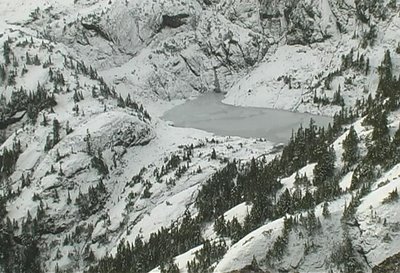 LOGS FROM YELLOW CEDAR TREES THAT GREW FOR OVER A THOUSAND YEARS ARE BEING MILLED BESIDE RESIDENTIAL HOMES IN ERRINGTON, B.C.
LOGS FROM YELLOW CEDAR TREES THAT GREW FOR OVER A THOUSAND YEARS ARE BEING MILLED BESIDE RESIDENTIAL HOMES IN ERRINGTON, B.C.7 am - the beep of my alarm clock is drowned out by the piercing beep of several massive front end loaders backing up, their engines roar as they lift massive logs, their tires spinning in the mud. I listen to the Errington Cedar Mill, a full 500 meters away, as the giant wood chipper grinds into action. A loud noise similar to standing beside an old blender grinding nuts or a belt sander tearing into a piece of wood. Very loud, very grating on the nerves, with bursts of 1 to 2 minutes every 10 to 15 minutes between 7 am and 5 pm wee days and often on week-ends. Each time the chipper spins to a halt, it is drowned out by the constant drone of saws, edgers, and planers. Trucks honk, chain saws roar, and the log loaders continue to roar and beep incessantly.
Years of public consultation, during which countless residents voluntary dedicated their time and energy, resulted in the official community plan (OCP) for Area F, which was legally drawn up by the Regional District of Nanaimo in 1999. This document designates most of Errington as Rural/Residential with the “Village Centre” being the most densely populated as well as the cultural and social hub of activities since the early 1900s. However the RDN has allowed heavy commercial industry to grow unchecked in the heart of Errington. In fact industry is consuming the heart of this community.
I regularly meet fully loaded logging trucks on Grafton Avenue, which has no paved shoulder and is not designed for heavy commercial traffic. I can only imagine the choice left to a school bus driver when facing one of these massive logging trucks. The rural residential make-up of Errington means that Grafton is frequented by horses, cyclists, children, and parents with infants in strollers.
These logging trucks bypass the old Alberni highway, designed for commercial traffic, in order to dump their logs at a new dry land sort leased out by the Errington Cedar Mill. The logs are then reloaded and once again driven through the heart of this community seven days a week including holidays. Chip trucks, logging trucks, and loaded flatbeds all make a very wide turn at the Errington store taking up several lanes at this busy intersection, which most residents of Errington must drive through daily.
Officials at the RDN admit that no changes have been approved for the property yet the original zoning mentions only a single sawmill as the permitted principle use. Albert Orcutt started Errington Cedar Products with Brad Meeker, owner of Meeker Lumber Ltd. of Mission, B.C. Together they have been able to secure 5 million board feet of old growth Western Red Cedar and Yellow Cedar logs annually.
While attending Errington Elementary School my class took field trips to the 14 acre farm next door where we observed a large sow pig with a litter of tiny piglets, cows being milked, and other animals in the barnyard. The ALR allowed the land to be stripped of most of the topsoil, watched a massive mill be built, and much of the area to be paved. After all of this the ALR approved the removal of this property from farm status on the grounds that the property could no longer support a farm.
This summer all of the trees at the back of the property were removed, the soil piled up, and a new road pushed in along the property lines of several long time residential homes. Ditches were gouged out along Christian Road to increase the drainage away from the mill. The dust retardant promised by the Ministry of Transportation was never applied as fully loaded trucks roared up and down the new road, sometimes well into the night. Some arrangement has been made so that logs are being sorted and scaled in downtown Errington, surrounded by residential homes, at a new land sort.
Designated industrial zones allow for residential and environmental concerns to be addressed while providing industrial grade infrastructure, safe highway access, and better emergency response. An OCP is meant to be strictly monitored and enforced.
If you have concerns please contact RDN Community Planning (250) 954-3798 E-mail: planning@rdn.bc.ca and/or local MLA Scott Fraser Toll free: 1-866-870-4190 E-mail: scott.fraser.mla@leg.bc.ca and/or Ministry of Transportation Barbara Thomas (250) 751-3126 E-mail: barbara.thomas@gov.bc.ca
